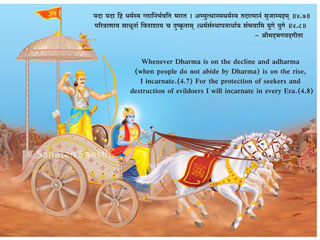Ayurveda for a healthy life ! – 9/2023

In earlier article, Qualities of food (Part I) dealing with ‘Biological qualities of food’ was referred. Now the next part is discussed in detail here.

6. Heavy and light food items
6A. Heavy food items : According to physics, heaviness of an object depends on its weight and specific gravity. In Ayurveda, whether a food item or medicine is heavy or light depends upon
1. Its effect on the body weight
2. Digestibility of a food item
Heavy food items are dominant in the Pruthvi and Apa elements. They are heavy to digest and also increase the body weight. Ayurveda describes the effect of this heavy quality of the substances on the body. Heavy food items nourish the tissues of the body, promote strength and cause obesity. The heavy quality subdues the Vata dosha and increases the Kapha dosha. It increases the quantity of faeces (Waste). Heavy food items are difficult to digest, hence, the digestive juices decrease. Thus, they subdue hunger. They cause constriction of the body passages. They affect not only the body but also the mind. They increase laziness and sluggishness. On consumption of heavy food items, the weight, heaviness, steadiness and firmness of the body increase.
Generally sweet, sour and salty food items are heavy. On consuming heavy food items even in a less amount, one gets the feeling of being full and a sense of satiety, e.g., one feels satisfied on drinking one or two cups of basundi (A sweet delicacy prepared by boiling milk for a long time, till over 60% of its water content is evaporated) because it is heavy. On the contrary, one can easily drink five to six cups of buttermilk, prepared after extracting butter, as it is light. Substances which are light according to physics can be heavy according to Ayurveda, e.g., ghee is light according to physics as it floats on water, but it causes increase in body weight, provides more calories and is heavy to digest. Hence, ghee is heavy according to Ayurveda. The basis to determine whether a substance is heavy or not is different in physics and Ayurveda.
Beef is heavy to digest and it also increases the body weight. Cereals and pulses are also heavy to digest for a child less than a year old. Poha (Rice flakes or flattened rice) is difficult to digest. People habituated to eating heavy food items, strong people, labourers, people undertaking regular exercise and people with a good digestive power; need not bother about the digestibility of food as they can easily digest heavy food items.
6B. Light food items : According to Ayurveda, the properties of light food items are as follows –
Food items or medicines which increase the lightness of the body are called light food items.
Light food items are dominant in the fire, air and ether elements. They are easy to digest and decrease weight of the body.
On consumption of light food items, the weight & strength of the tissues and the body decrease. They increase Vata and subdue the Kapha dosha. They decrease the quantity of waste products. They promote secretion of digestive juices and digestive power. They are useful in fever, diarrhoea, malabsorption and obesity. Light food items and medicines relieve the constriction or obstruction in the body passages and thus, make one’s mind energetic and enthusiastic. But as they provide fewer calories, they make the body weak. Generally astringent, pungent and bitter food items are light. Whether a particular food item is light or heavy is important in delicate, inactive, weak or diseased people in whom the digestive power is weak.
The table ahead lists some heavy and light food items.
| Food items | Heavy food items | Light food items |
| 1. Cereals | Cereals less than a year old, yava (Barley), wheat | Cereals more than a year old and vari |
| 2. Milk products | Milk which is not boiled, buttermilk with butter, milk with cream, ghee, butter, cream, milk of a buffalo, elephant and sheep and milk obtained in the morning | Boiled milk, goat’s milk, human milk, buttermilk without butter, curd after removing cream, fresh butter, old ghee and milk obtained in the evening |
| 3. Sugar based products | New jaggery, new honey, khadisakhar (Cubed sugar) | Sugar, old jaggery and old honey |
| 4. Pulses | Udid (Black gram), chavli (Cow peas), val and chana (Gram) | Mung (Green gram), masur (Lentil), tur (Red gram), peas, matki (Moth beans), kulith (Horse gram) and roasted chana |
| 5. Nuts, dry fruits and oil seeds | Til (Seasame seeds), coconut, almond, priyala seeds (Charoli), dates, walnut, groundnut, til, oil, atasi (Linseed) oil, eranda (Castor) oil, coconut oil, almond oil, sunflower seeds, groundnut oil and lotus (Kamal) seeds | Mustard |
| 6. Meat | Meat of a sheep, buffalo, snake, frog, pigeon and domestic animals, beef, chicken, pork, big fish, eggs of birds and fish, animal fat, bone marrow and brain | Meat of a rabbit, deer, sparrow, parrot, sasana, crow, horse and lava meat of carnivorous animals, e.g., tiger and lion, small fish and mutton |
| 7. Vegetables | Onion, cucumber, tondali, spinach, potato, radish and red pumpkin | Brinjal, snake gourd, suran, (Yam), radish leaves, drumstick, ambat chuka, kushmanda (Ash gourd) and tandulja |
| 8. Fruits | Mango, pineapple, jamun, banana, orange, grapes, sweet lime, kapittha (Wood apple), khirni, toddy fruit and shamiphal | Pomegranate, lemon, apple, ripe kokam and karavanda |
| 9. Spices | Ginger, onion, garlic, wet pippali and kokam | Asafoetida, cloves, pepper, nutmeg, saffron, coriander seeds, badishep (Fennel seeds), vavding, cinnamon, cumin seeds and ajamoda (Celery) |
| 10. Wine | New wine (Alcohol) | Old wine (Alcohol) |
| 11. Drinking water | Water from wells, moist and marshy ground, lakes and water during the winter (Hemant) | Heated water, water from flowing rivers and water during autumn (Sharad), i.e., during the month of October |
7. What is meant by oily and dry food items ?
Out of the Panchamahabhutas, oily food items are dominant in the Apa element, while dry food items are dominant in the
Agni and the Vayu elements.
8. Who should eat dry food items and who should avoid them ?
Dry food items should be consumed by those suffering from cold, cough, swelling all over the body, ascites and diseases which increase the secretions of the body. These items should be
avoided in diseases which cause dryness, e.g., liver cirrhosis, Phrynoderma (Rough dry skin eruption marked by keratosis) and diseases which cause loss of body fluids, e.g., gastroenteritis.
The table ahead lists some dry and oily food items.
| Food items | Dry food items | Oily food items |
| 1. Milk products | Milk of a camel and donkey | Milk of a cow, sheep, goat, buffalo and elephant, cream, butter and ghee |
| 2. Cereals | Yava (Barley) | Rice and wheat |
| 3. Pulses | Masur (Lentil), tur (Red gram), matki (Moth beans), chavli (Cow peas) and kulith (Horse gram) | Udid (Black gram), til (Sesame seeds), atasi (Linseed) and val |
| 4. Meat | Meat of a rabbit, snake, birds such as lava and animals living in the forest, i.e., animals living in a dry natural climate, e.g., a deer | Generally cooked meat, mutton, chicken, pork, meat of a bull, tortoise, domestic animals, fish and crabs |
| 5. Vegetables | Spinach, leafy vegetables, suran (Yam), cucumber and bharangi (Clerodendrum serratum) | Snakegourd, onion and ghosale |
| 6. Fruits | Jamun, kapittha (Wood apple), karanja, behada and betel nut | Banana, badara (Berry), grapes, bhokar, bel (Bilva) fruit, lemon, coconut and pomegranate |
| 7. Nuts and dry fruits | Kharik (dry dates) | Almonds, dates and black grapes |
| 8. Oil | Sunflower oil | All other types of oil |
| 9. Sugar based products | Honey | Sugar, jaggery, sugarcane and khadisakhar (Cubed sugar) |
| 10. Spices | Cumin seeds, sunth (Dry ginger), tamarind, badishep (Fennel seeds), pepper and turmeric | Asafoetida, garlic and onion |
| 11. Wine | All types of wine (alcoholic drinks) are dry | – |
| 12. Salt | – | All types of salt |
| 13. Drinking water | River water | Water from marshy land and water in winter |

 Take Disciplinary Action Against Charitable Hospitals Violating Rules : Surajya Abhiyan
Take Disciplinary Action Against Charitable Hospitals Violating Rules : Surajya Abhiyan Detergent found in ice-creams, phosphoric acid in soft drinks !
Detergent found in ice-creams, phosphoric acid in soft drinks ! Radiant Thoughts of Sachchidananda Parabrahman (Dr) Jayant Athavale
Radiant Thoughts of Sachchidananda Parabrahman (Dr) Jayant Athavale Law banning Conversion of Religion is against Individual Freedom : Babbles Former Judge S Muralidhar
Law banning Conversion of Religion is against Individual Freedom : Babbles Former Judge S Muralidhar Editorial : Khalistan, Balochistan and Pakistan
Editorial : Khalistan, Balochistan and Pakistan After India becomes a ‘Hindu Rashtra’, Russia will embrace Hinduism and spread it globally : Nostradamus’ Prophecy
After India becomes a ‘Hindu Rashtra’, Russia will embrace Hinduism and spread it globally : Nostradamus’ Prophecy